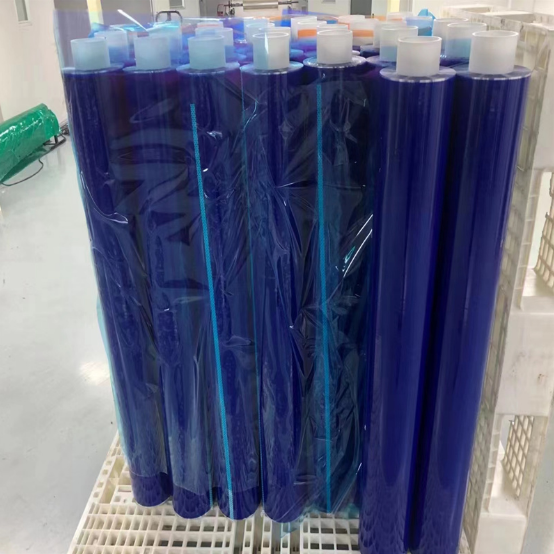Jul. 04, 2024
PET protective film, also known as Polyethylene Terephthalate film, is one of the simplest and most widely used polymer organic compounds globally. This type of protective film is crafted from specialized polyethylene plastic and is categorized by density into high, medium, and low-density polyethylene films.
The primary benefit of using PET protective film is its ability to shield products from pollution, corrosion, and scratches throughout various stages such as production, processing, transportation, storage, and usage. This ensures that the product maintains its original smooth and shiny surface, enhancing both the quality of the product and its competitiveness in the market.
PET protective film is widely used across various industries due to its protective properties. Here's how different sectors benefit from it:
Hardware Industry: PET protective film is used on items like computer cases, galvanized sheets, aluminum, stainless steel, and titanium gold sheets. It also protects plastic steel, glass sheets, and solar panels.
Optoelectronic Industry: This includes applications on LCD displays, backlight panels, cold light films, membrane switches, and mobile phone screens.
Plastic Industry: PET film protects ABS and PP injection-molded products, PVC sheets, acrylic sheets, instruments, plastic lenses, and the surfaces of painted parts.
Printing Industry: It safeguards surfaces of PVC, PC boards, aluminum plates, and films, particularly printed nameplates.
Wire and Cable Industry: The film is used to cover copper wires and cable products, both finished and in-progress, helping to prevent dust pollution and providing resistance against oxidation and fouling.
Electronics Industry: It serves to prevent scratches and damage on finished and semi-finished products during manufacturing and handling on assembly lines.
Mobile Phone and Digital Industry: Known as mobile phone skins or protective films, these serve to protect both the body and screen of mobile phones from damage and wear.
The versatile use of PET protective film across multiple industries showcases its essential role in maintaining the quality and longevity of products.

The effectiveness of PET protective film largely hinges on its adhesive properties, which play a crucial role in protecting products during various stages such as storage, transportation, and use. This film ensures that the surfaces it covers remain pristine and free from scratches and contamination, thereby elevating the overall quality of the products.
PET protective film is engineered to adhere suitably to surfaces without causing damage or leaving residues. This adherence prevents the film from slipping or lifting during handling and processing, which is essential for maintaining the integrity of the protected items. The film also boasts excellent retention force and is resistant to various environmental factors, including weather conditions.
A key feature of PET protective film is its optimal viscosity, which facilitates easy application and removal. The film is designed to maintain its peeling ability over time, ensuring that it can be removed with minimal effort and without increasing stickiness after extended use. Even under direct sunlight, the film's performance remains stable for up to a year, making it a reliable choice for long-term protection.
Protecting PET protective film effectively is crucial to ensure it performs its function without leaving any residue on the protected surfaces. One of the most common issues faced by users is the degumming of the film, which occurs when the adhesive remains on the product after the film is removed, instead of staying with the film. This scenario is frustrating as it requires significant time and effort to remove the leftover adhesive.
The primary cause of this problem is often the use of an inappropriate pressure-sensitive adhesive that does not comply with required standards. When the external tension of the film exceeds the internal stress during removal, the adhesive separates incorrectly, sticking to the product instead of coming off cleanly with the film. If this issue arises, it can be addressed by gently wiping the residue with a clean cloth dampened with a little alcohol.
As society progresses and demands for a higher quality of life increase, the importance of effective packaging solutions like PET protective film becomes more apparent. Historically, many products suffered damage during transit, leading to economic losses and the potential for items to become unusable.
However, the manufacturing processes for PET protective film have improved over time, broadening its applications and enhancing the precision of the machinery used for its production. These advancements help ensure that products reach their destinations in pristine condition, demonstrating the essential role of PET protective film in modern logistics and product care.
Navigation
+86 158 1691 5404
+86 757 8271 3937
+86 757 8271 3937
No. 10 Industry Huacongsiyue Village, Shishan Town, Nanhai District, Foshan, Guangdong Province, China